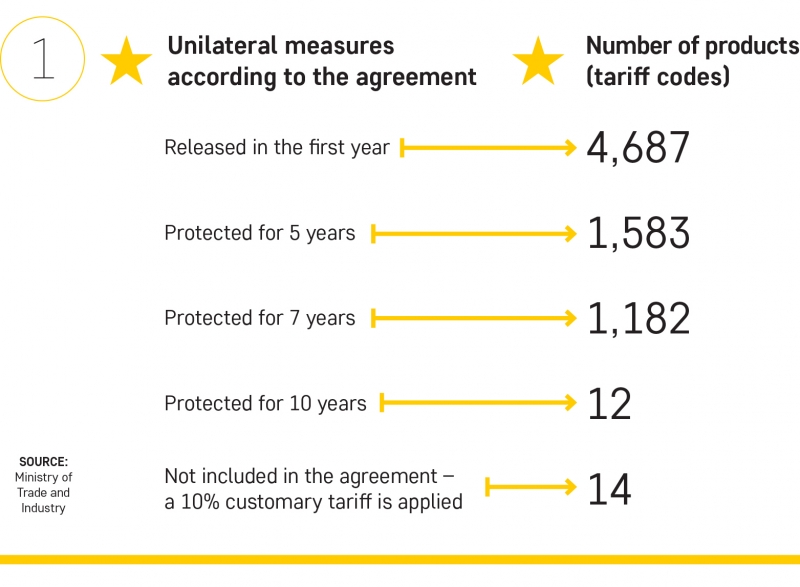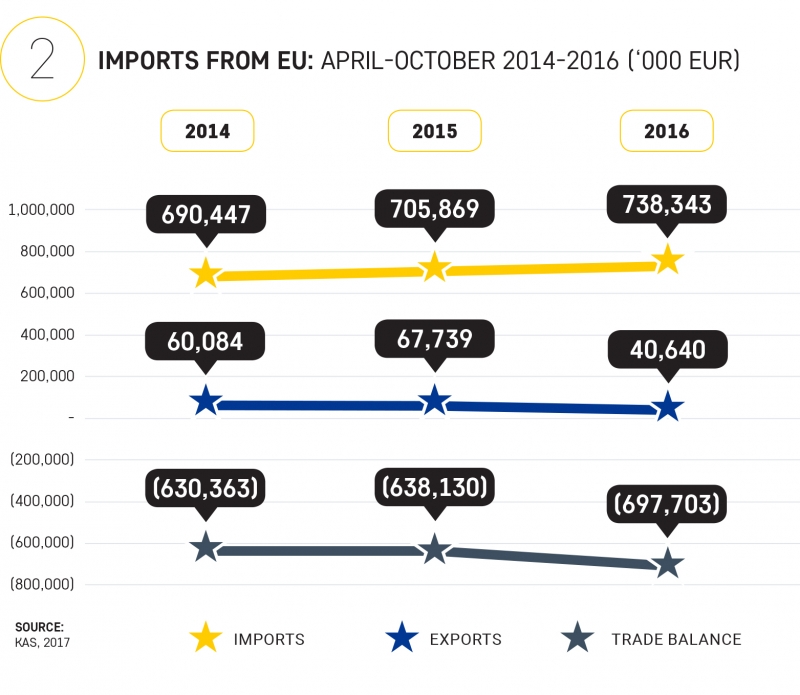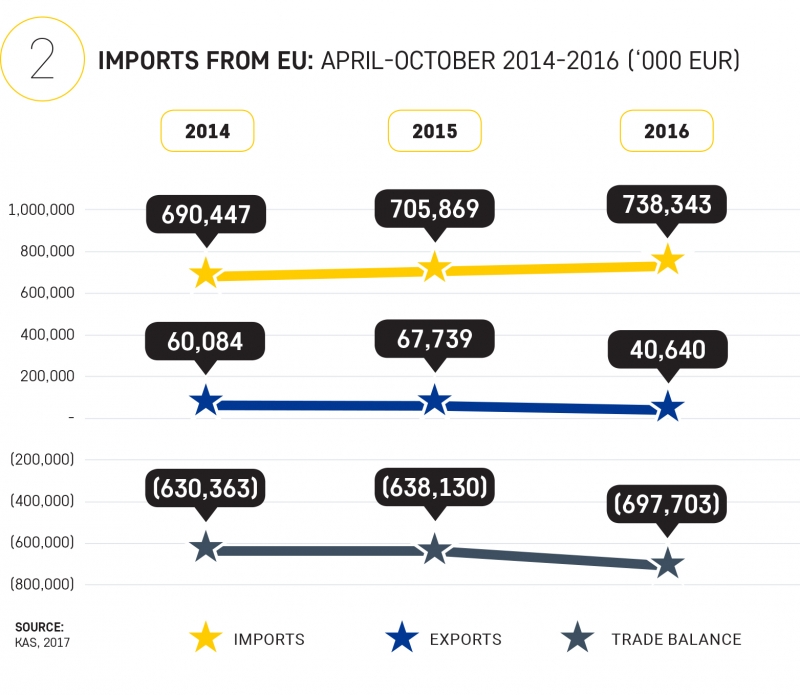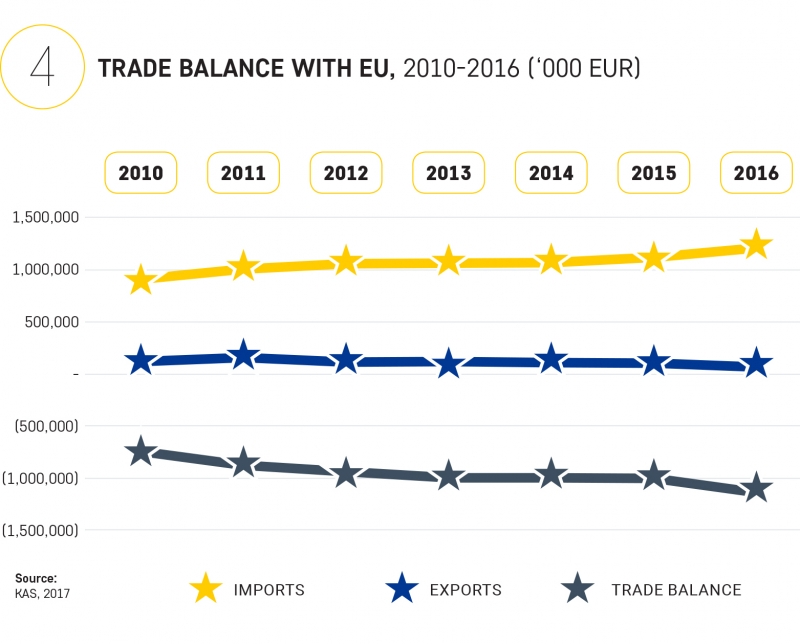The beginning of April, marks the first anniversary of entering into force of the Stabilization and Association Agreement (SAA), signed between Kosovo and the European Union. Despite the fact that there was a great enthusiasm about this agreement, its effects are not expected to be immediate. At least not for export, because Kosovar products already had a preferential treatment in the EU market, since 2000. Kosovo benefited from such a unilateral arrangement through Autonomous Preferential Measures, where all the products “made in Kosova”, had unlimited duty-free access in the EU market.
However, the situation should have been different on the demand side, the Kosovar customer. Since the imports from the EU market constitutes on average around 40% of the total of imports in Kosovo, the SAA agreement should have been reflected in customers’ pockets, through lower prices for 4,687 different products which were released from customs duty since this agreement entered into force. Except 14 products that were not negotiated at all, for the remaining products (2,277) the customs duty will continue to be applied for 5, 7, respectively 10 years, depending on the level of sensitivity of these products towards competition from imports.

The data published by Kosovo’s Agency of Statistics for the first months after the SAA agreement entered into force, do not reveal a significant increase of imports. The value of imports from the EU for the period April-October of 2016, was 738.3 million euros, or around 5% more when compared with the same period of the previous year. This increase cannot be attributed exclusively to the SAA, since imports from the EU have increased systematically in the previous years.
Since the disaggregated data on monthly basis are not available after October 2016, the following data refer to the period from April to October only. Therefore, for comparative purposes the data for the same period will be used for the two previous years.

Transport means, plastic products, pharmaceutical products as well as different food products, are some of the main products whose imports increased during April-October 2016 compared to the same period in the two previous years.

Despite the positive trend of exports, the trade deficit of Kosovo in general continues to remain high. The increase of exports is not proportional to the increase of imports, while the gap continues to deepen from year to year. As far as the EU market is concerned, during the last three years Kosovar exports have decreased. This fall in exports may be as a result of ever increasing trade flows with the region.
